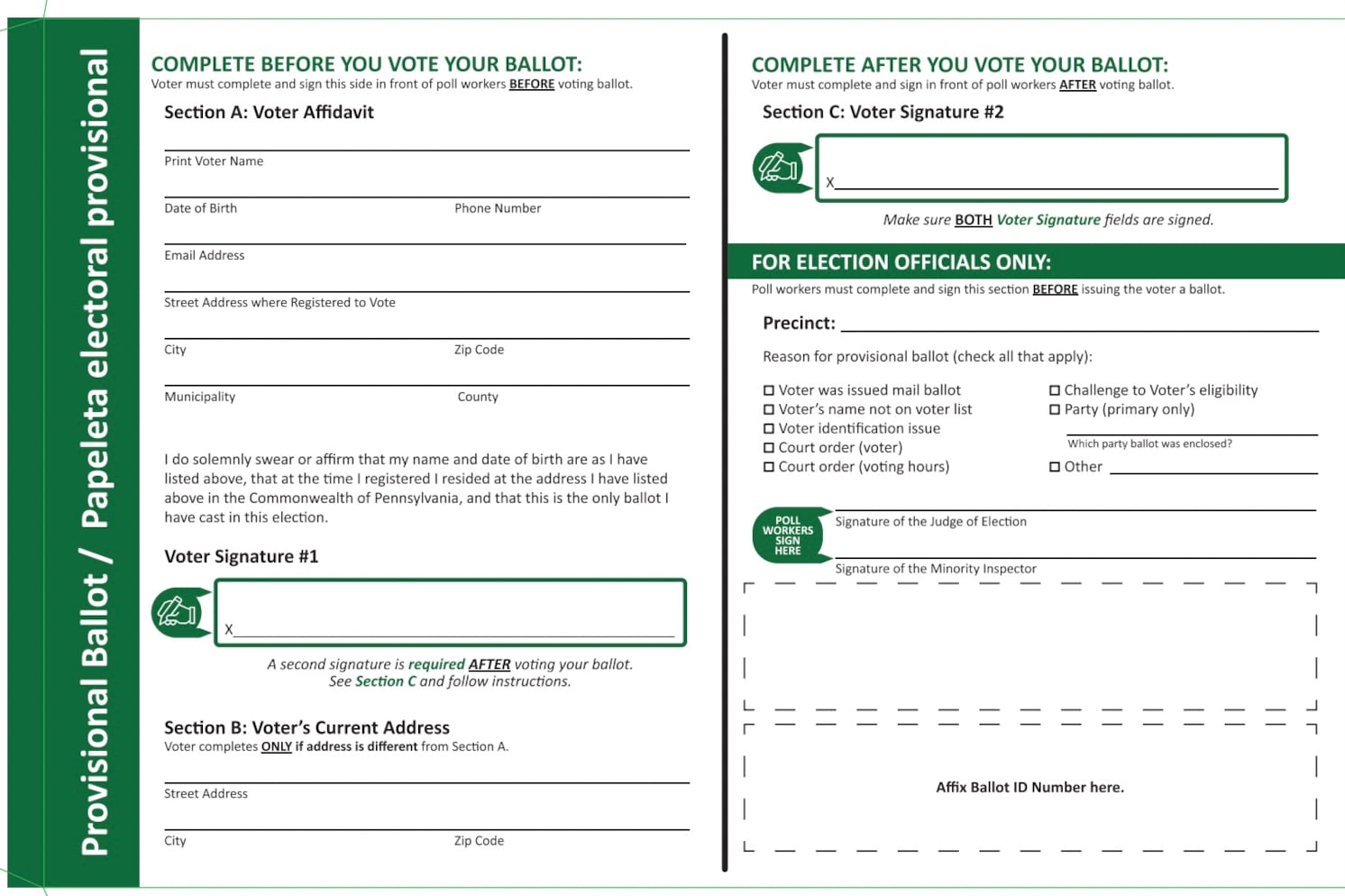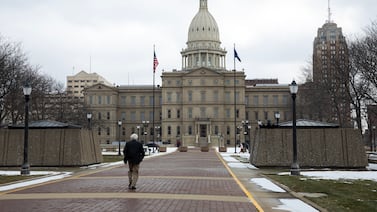Votebeat is a nonprofit news organization reporting on voting access and election administration across the U.S. Sign up for Votebeat Pennsylvania’s free newsletter here.
Pennsylvania election officials on Monday announced a redesigned provisional-ballot envelope that they hope will lead to fewer ballots being rejected for technical errors.
“Improvements to envelope design might seem like a small thing, but it has a huge impact on the ability for Pennsylvanians across the commonwealth to have their votes counted,” said Seth Bluestein, a Republican city commissioner for Philadelphia, which worked with the Department of State on the new design.
Philadelphia plans to use the new design in its November municipal elections. The state also consulted election officials from Berks, Greene, Butler, and Mercer counties.
Provisional ballots are meant to be a fail-safe for voters at the polls, to be used when there are questions about eligibility or whether someone has already voted. Each one is placed in a separate envelope, giving election officials a chance to verify that the ballot should be counted before it is added to the tally.
But such ballots can be rejected for technical reasons, such as a missing voter signature on the envelope. The envelope redesign is meant to make that less likely, and follows a similar redesign of the return envelopes for mail ballots.
That redesign in 2023 contributed to a 57% drop in mail-ballot rejections last year, said Secretary of the Commonwealth Al Schmidt, and he’s hoping for similar results from the provisional-ballot envelope redesign.
With the mail-ballot envelopes, Schmidt was able to require that counties use the new design. But for the provisional-ballot envelopes, for now, it’s up to counties to choose whether to adopt the new design. Schmidt said that as an incentive, the department is offering counties financial assistance to buy the new envelopes.
The new design makes it clearer where voters and poll workers must sign the envelope. It more clearly delineates which section is to be filled out by the voter or poll workers, officials said, and it provides clearer instructions at which stage of the provisional voting process each section is to be filled out.
There are several reasons why a voter might need to use a provisional ballot. For example, a first-time in-person voter who lacks identification, or a voter who isn’t registered when they think they are, may have to use a provisional ballot. Absentee and mail voters who lose their ballots and show up to vote in person will also be assigned a provisional ballot.
Since no-excuse mail voting was introduced in 2020, use of provisional ballots has ballooned. That’s likely because when a voter is recorded as having asked for a mail ballot, but then shows up to vote in person without turning that mail ballot in, they must vote provisionally, so election officials can ensure that the person hasn’t already voted.
About 26,000 provisional ballots were cast in the 2016 presidential election, before the state had no-excuse mail voting, according to data tracked by the Pennsylvania Department of State. In the 2024 election, that number nearly quadrupled to almost 100,000.
Along with that increase, a greater share of ballots are being rejected for technical errors on the exterior envelope, where voters sign an affidavit, Votebeat and Spotlight PA reported in April. Pennsylvania election officials said this is likely due to a combination of factors — including inadequate poll worker training and general unfamiliarity with a process that was once rarely used.
In the 2024 general election, nearly 5% of provisional ballots, or more than 4,800, were rejected for affidavit envelope errors, up from fewer than 1% in 2016.
Bluestein said such errors represented the second-highest category of ballot rejections in the 2024 general election, behind voters not being registered.
Like mail ballots, provisional ballots require voters to handwrite information on the exterior envelope. Mail ballots can be rejected if voters don’t date and sign the envelope.
Provisional ballot envelopes have even more requirements that could trip up an eligible voter. Voters have to sign the outer affidavit envelope in two separate places and write their address. Two poll workers have to sign and date the envelope, too, and check a box with the reason the voter used a provisional ballot.
Thad Hall, election director in Mercer County who consulted on the redesign, said he thinks the new envelope is much more intuitively designed and will reduce rejections.
“The old form was designed by lawyers and it doesn’t flow well,” Hall said. “The newer one flows a lot better.”
Hall said some counties may opt to deplete their current stock of envelopes or wait until next year to adopt the new design, so they don’t have to reprint poll worker instruction manuals for November. But he expects most counties will eventually adopt it.
Carter Walker is a reporter for Votebeat in partnership with Spotlight PA. Contact Carter at cwalker@votebeat.org.






